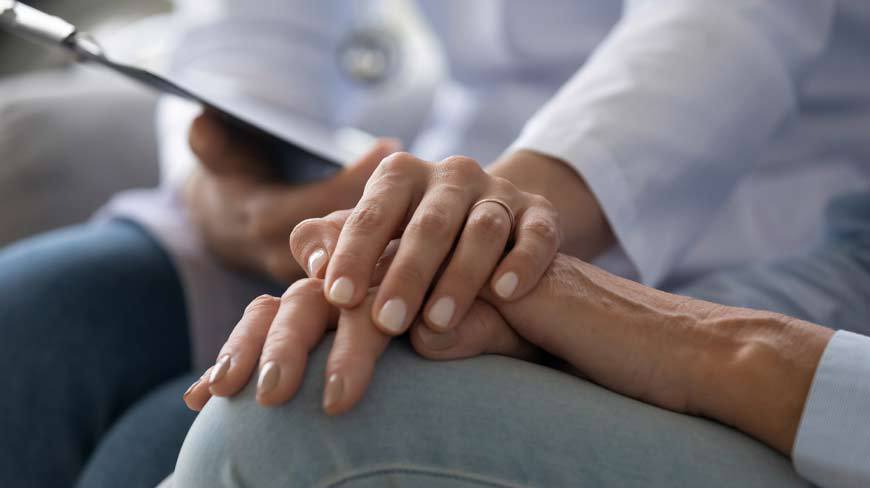Usually, the treatment of bladder cancer is based on the clinical stage of the tumor when it is initially diagnosed. This includes the depth it is thought to have grown into a person’s bladder wall and if the cancer has spread past the bladder.
There are other factors, too, including the tumor’s size, how quickly the cancer cells grow, and a person’s health and preferences. All these factors impact the treatment options available for bladder cancer.
Treating Stage 0 Bladder Cancer
If someone is diagnosed with stage 0 bladder cancer, it includes flat non-invasive carcinoma or non-invasive papillary carcinoma. In both situations, cancer has only grown to the inner lining of the bladder. This means it has not spread any deeper into the wall of the bladder.
Usually, the early stages of bladder cancer are treated with TURBT – transurethral resection. It is then followed, within 24 hours, by intravesical therapy. This is important to understand.
Stage 0a Bladder Cancer Treatment
In some situations, no additional treatment is necessary. Then, cystoscopy will be done every three to six months to find signs that cancer has returned.
For slow-growing or low-grade non-invasive papillary tumors, it is necessary to engage in intravesical chemotherapy. This method of bladder cancer treatment can be started just a few weeks after surgery is done. If cancer returns, the treatments can be conducted again. In some situations, intravesical chemo will be repeated for the next 12 months to help prevent cancer from returning.
If someone is diagnosed with fast-growing non-invasive papillary tumors are much more likely to return once treatment has been given by a urologist. Therefore, intravesical BCG is commonly used after someone undergoes surgery. Before being administered, though, TURBT will be repeated to make sure cancer has not impacted the bladder’s muscle layer.
Usually, BCG is done several weeks after surgery and repeated weekly for a few weeks. It is believed that intravesical BCG is more effective than intravesical chemotherapy for all types of high-grade cancers. It helps ensure the cancers do not return and help prevent them from getting worse. It also has more side effects.
With stage 0 bladder cancers, extensive surgery is rarely needed. Complete or partial cystectomy, which is the removal of the bladder, will only be a consideration if there are several superficial cancers or if cancer keeps growing even with treatment.
If someone is dealing with a flat non-invasive, intravesical BCG is the treatment option after TURBT is done. Patients who have these tumors will receive six weekly treatments of BCG, which begins a few weeks later. There are some doctors who will recommend the repeating of BCG treatment about every three to six months.
Follow-Up and Outlook After Treatment Is Given
Once treatment for stage 0 cancer is given, close follow-up is necessary. If cystoscopy is done, follow-ups are necessary every three months for a few years to find signs that cancer has returned or that new bladder tumors have formed.
For people who have stage 0a, the outlook is good. These are cancer conditions that can be cured when the proper treatment is given. With long-term follow-up care, superficial cancers may be found in the bladder or other areas of the urinary system. While these cancers must be treated, they are not typically life-threatening or very invasive.
With stage 0is bladder cancer, the long-term outlook is not as good. These are the types of cancers that have a much higher risk of returning, and they may come back more serious as they grow into deeper layers of the bladder or spread to other tissues.
Treatment Options for Stage I Bladder Cancer
If someone is diagnosed with stage I bladder cancer, it means it has grown into the connective tissue layer in the bladder wall; however, it has not yet reached the layer of muscle. The first treatment option is TURBT with fulguration. This is done to help determine how severe the cancer is instead of trying to cure it. If no other treatment is provided, people may develop another type of bladder cancer, which is often more advanced.
Even when the cancer is low grade, a second TURBT is needed after a few weeks. If the doctor feels that the cancer is gone, then intravesical chemo or intravesical BCG (which is the preferred option) is given. If there is still cancer present, a cystectomy or intravesical BCG is required.
For people with high-grade cancer and if several tumors are present, or if the tumor is larger when first found, then a radical cystectomy is needed. Individuals who are not healthy enough for the cystectomy may undergo radiation therapy. However, in this case, the possibility of a full cure is not as good.
Treatment Options for Stage II Bladder Cancer
These types of cancers have grown into the muscle portion of the bladder wall; however, it has not gone any further. The first treatment option, like most of the others, is TURBT. However, this is done to determine the severity of cancer. If cancer makes its way into the muscles, then the bladder has to be removed and this is considered the standard treatment.
For individuals who are not in good enough health to receive chemo, a radical cystectomy may be the only option available to eliminate the cancer. Also, most doctors prefer chemo prior to surgery because it helps individuals live longer than just surgery. If chemo is given first, then surgery will be delayed to give the chemo an opportunity to work.
Seeing Treatment for Bladder Cancer
When it comes to bladder cancer, seeking the proper treatment is essential. Taking the right steps and visiting a doctor sooner than later is recommended. This is going to help ensure the desired results are achieved. Being informed is the best way to ensure the desired results are achieved and that the cancer treatment applicable to the stage is given. In the long run, this is going to give a patient the best chance of a full recovery.

